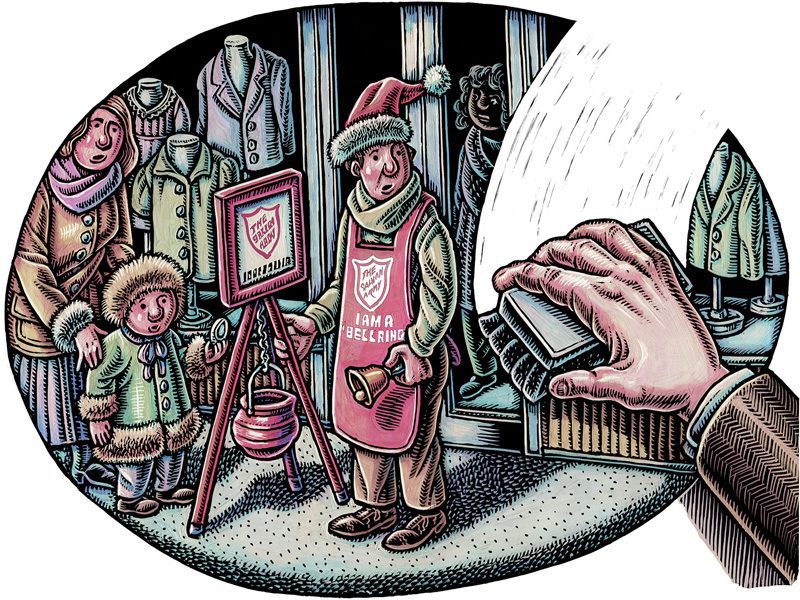…so what did you expect?
by Robert Docter, Editor-In-Chief –
An Analysis of BELIEF, EXPECTATION AND CHANGE
I’ve often said within these pages that people take on the characteristics of those with whom they choose to associate. We become like them as they communicate themselves to us through various verbal and non-verbal messages. We become the way our associates treat us. This idea is not new. It’s ancient.
Greek mythology has this guy Pygmalion who was a real blamer. Somehow he found ways to find women responsible for everything that went wrong. They could do nothing right and all the pain in the world was directly attributable to them. He despised them individually and as a group. Makes me wonder a little about his mother.
Pyggie was unmarried and decided to stay that way forever. This decision, however, did nothing for his loneliness. So, as a sculptor he decided to make himself an ivory statue of the perfect woman—silent, still, unchanging, ageless. He succeeded and came to love his creation with an unmatched ardor.
During the festival of Aphrodite, the goddess expressed a willingness to grant him a single wish. Interestingly enough, Pyg asked the goddess to give him a wife “like my ivory virgin.” She went even further.
When he returned home he found his ivory statue alive. According to the myth, it was the goddess who turned the trick—but according to later interpretation—his own expectations accomplished the fact. He had treated the statue as real, and she became real to him.
George Bernard Shaw used the same plot for his play, Pygmalion. Maybe you saw the movie. It was called My Fair Lady. It concerned this fellow Henry Higgins, a linguist of some note, who came in contact with a flower girl from Povertyville named Eliza Doolittle. Her speaking was so contorted with the worst possible English dialect as to make her almost unintelligible. He gave her a place to live, dressed her beautifully and caused her to associate with upper-class people; most of all, he taught her how to say “the rain in Spain falls mainly on the plain.”
Gradually, she changed—not because Higgins gave her perfect speech—in fact he always treated her as a flower girl—as a beautiful subject in an experiment. She changed for two reasons: one, because she believed her self to be different; and, two, because the people she began to associate with expected her to be like them in terms of language, dress, deportment and multiple other factors. The change in her own belief system and in the attitudes of her new associates made it possible for her to see herself as genuinely different—that she could speak more understandably—that she could think through the stress of conversation—that she now practiced different social conventions.
Freddy, an upper-class young man with a very upper-class mother, treated her the way he saw her—with the same level of caring that the original Pygmalion treated his ivory statue. To Freddy, she was a beautiful, intelligent, vivacious young lady—not a flower girl and not a subject in an experiment.
Life presents to us the opportunity to relate to people. I believe it is a truism that people change in the direction they are expected to change and that that expectation grows in the direction we choose to treat those around us. If it is positive, it starts with a belief on our part that each person has merit and can improve themselves for the better.
Here are some ideas that might make this connection between belief, expectation and change more concrete:
1. Assess the attitudes you have toward those around you concerning their current behavior.
There’s an old expression that reminds us that attitudes are “caught” not “bought.” This means that directing people to “change their attitude” will result only in failure. They will change their attitude when you begin treating them more positively.
2. Believe that it’s possible for you to change the manner in which you relate to others.
It all starts with your belief system. Some disconnect their relationship with God from their relationship with their children, wives, subordinates, friends, etc. All of us can improve. Remember—people change in the direction they are treated.
3. When working with people close to you as a parent or supervisor,
negotiate the establishment of goals together. Make the goals “minimal” rather than the ultimate “maximal.”
Everyone needs to begin slowly in achieving this change. We can’t assume immediate maximum responses. Have a “growth timeline” and expand the goals gradually.
4. Build a “climate” of warmth in relationships in which there exists mutuality and appropriate praise.
Remember that people grow from strength to strength—not weakness to strength. Find ways to praise honestly.
5. Value achievement!
Know what constitutes steps in achievement and communicate that value both verbally and non-verbally. Recognize that some need to be taught specific skills to achieve. Teach them.
6. Never give up on anyone.
Communicate the reality that everyone can improve.
7. Do not demand, expect, or set goals of perfection.
Remember no one bats a thousand. Great ball players make millions by batting in the low .300s.
As we communicate a positive expectation to those around us and do it with warmth, generosity and praise, we begin to discover that we, ourselves, have experienced a positive change and that it has been transmitted to those around us.
We change according to our expectations. We gain these expectations from the manner we treat and are treated by our associates.










